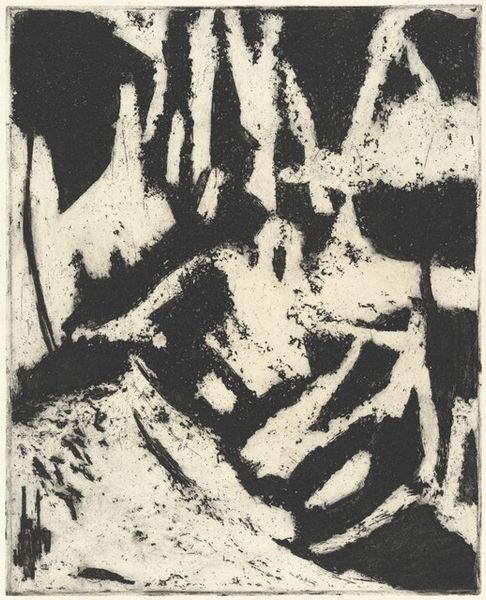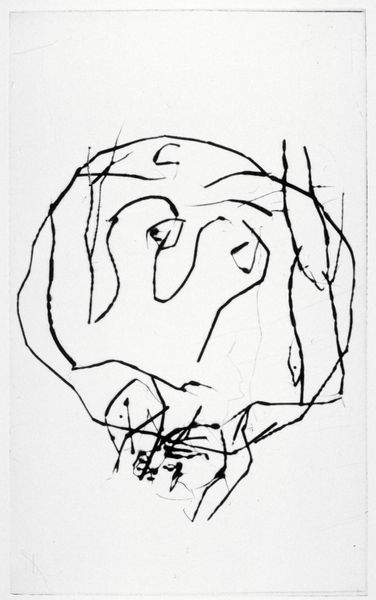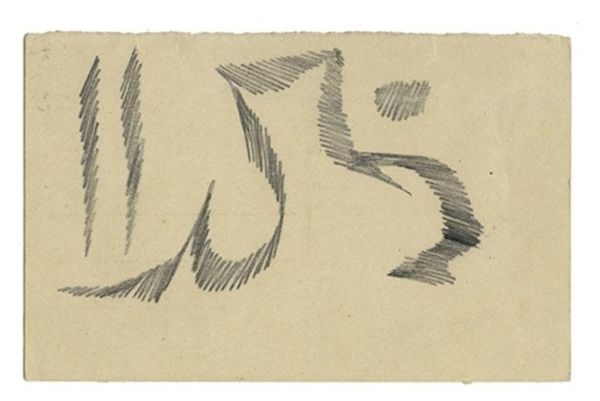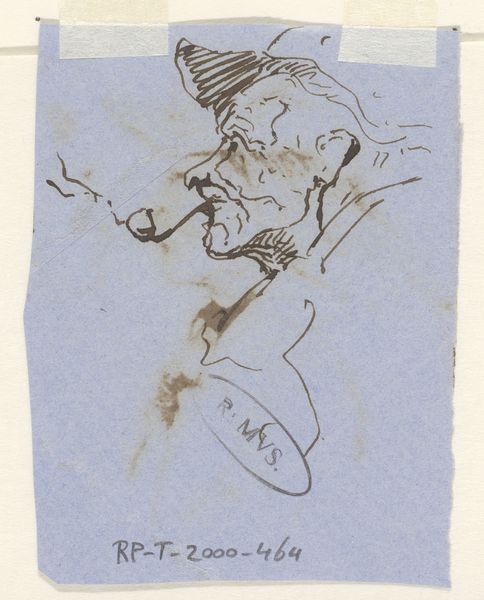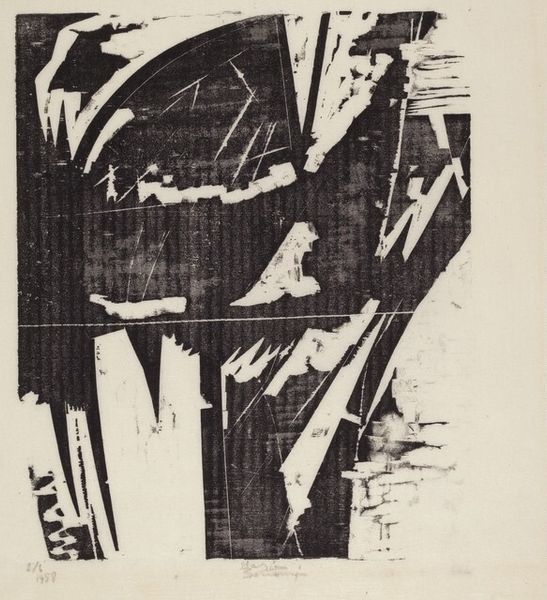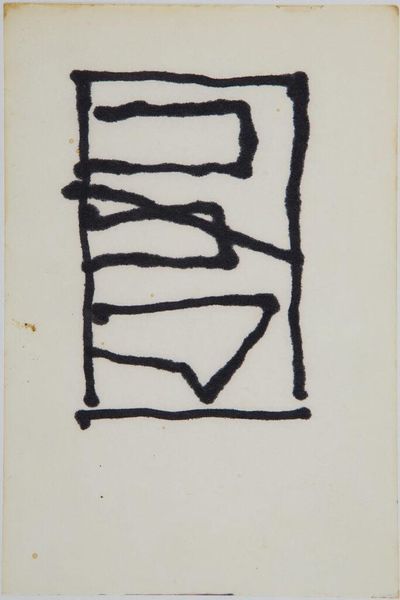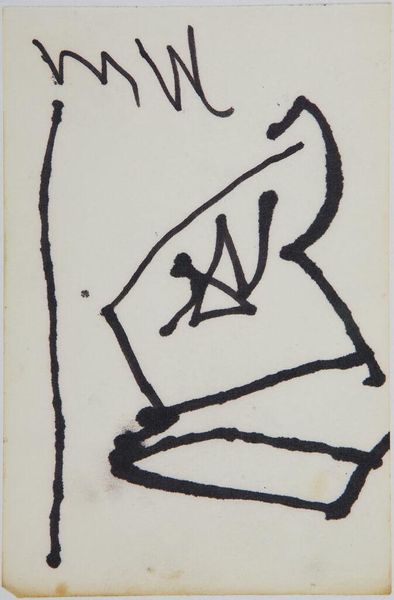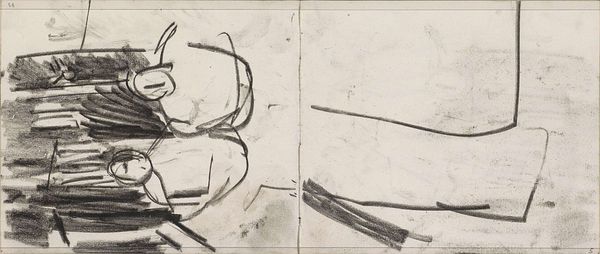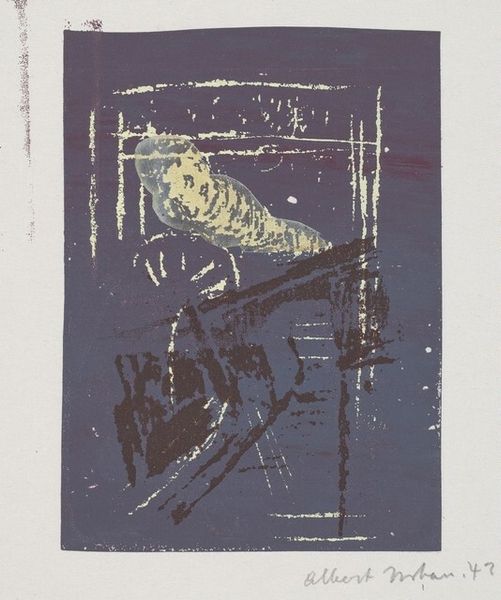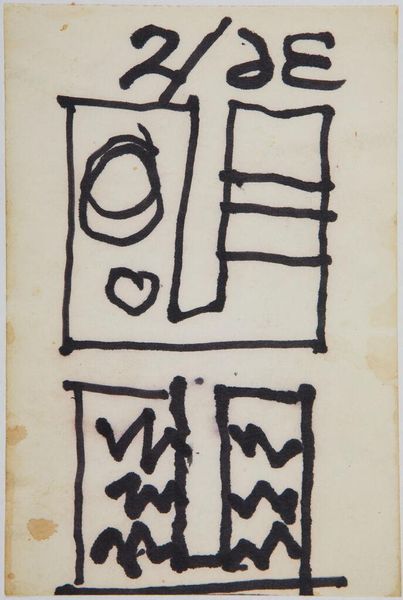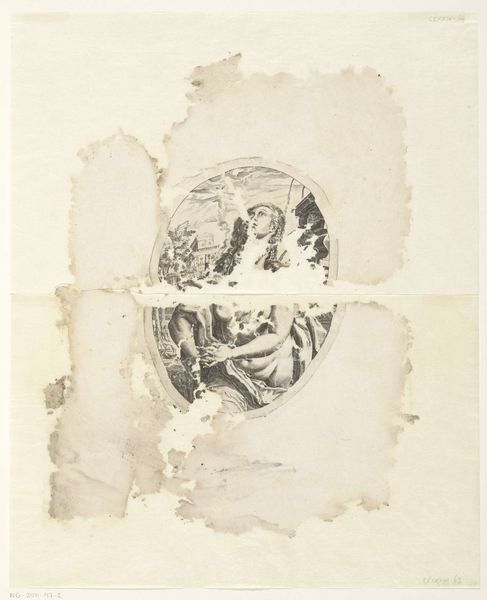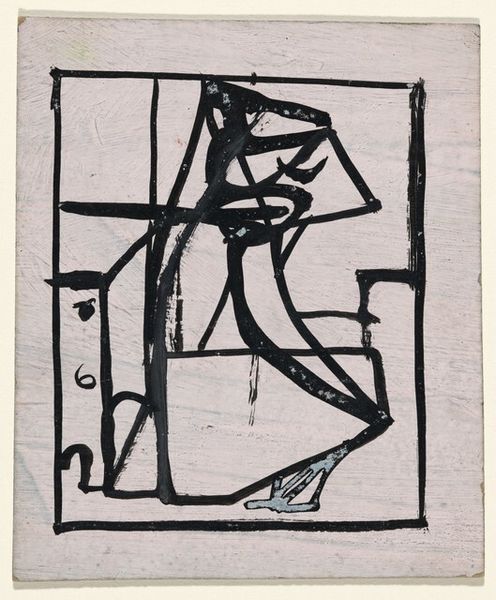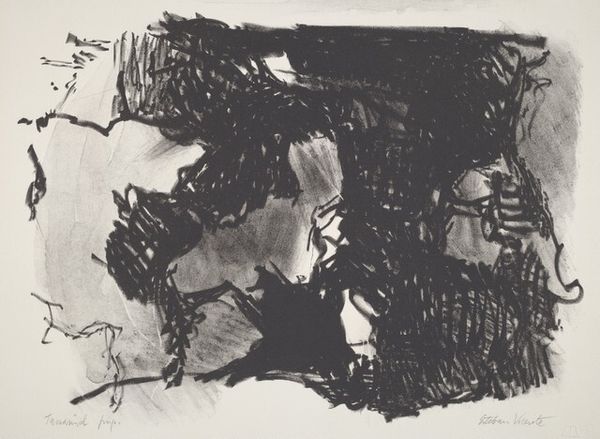
drawing, print, paper, ink
#
abstract-expressionism
#
drawing
# print
#
paper
#
ink
#
neo-dada
#
geometric
#
abstraction
Dimensions: overall (irregular): 14.2 x 14 cm (5 9/16 x 5 1/2 in.)
Copyright: National Gallery of Art: CC0 1.0
Editor: So this is Jasper Johns' "6," created in 1963. It’s a print on paper using ink. I find its simplicity quite striking; the starkness of the black ink against the raw paper almost feels like a child’s drawing, yet the composition has a clear intentionality. What do you see in this work? Curator: Well, you've already touched on some key aspects. Johns, in the '60s, was pushing against the grand gestures of Abstract Expressionism. How does presenting the number six, a seemingly banal and easily reproduced subject, challenge the idea of the artist's unique expression and the aura of the artwork? Think about the social and political climate then, the rise of Pop Art, questioning traditional values. Editor: It's almost anti-art in a way, right? Taking something so ordinary and giving it gallery space. Was he commenting on consumer culture? Curator: Absolutely. But it's more nuanced than a simple endorsement or critique. Consider Johns’ interest in signs and symbols. The number "6" exists as part of a system, of language and mathematics, but here, divorced from practical application, it becomes an object for contemplation. What do you think the layered lines and scribbles add? Editor: Maybe a sense of process, or maybe to undermine its own legibility, or even elevate something everyday to art with more complexity than we often credit. Curator: Precisely. Johns draws attention to the constructed nature of meaning, both in art and society. His choices serve as an observation about how we create art. This piece forces the viewer to really look at, and reconsider, our own understanding of art in the public sphere. Editor: That’s given me a totally different way of appreciating what initially seemed like a basic drawing! It shows a very astute sense of social critique! Curator: Indeed, seeing beyond the immediate visual is vital. Considering Johns’ artistic motivations provides invaluable information about this artwork.
Comments
No comments
Be the first to comment and join the conversation on the ultimate creative platform.
